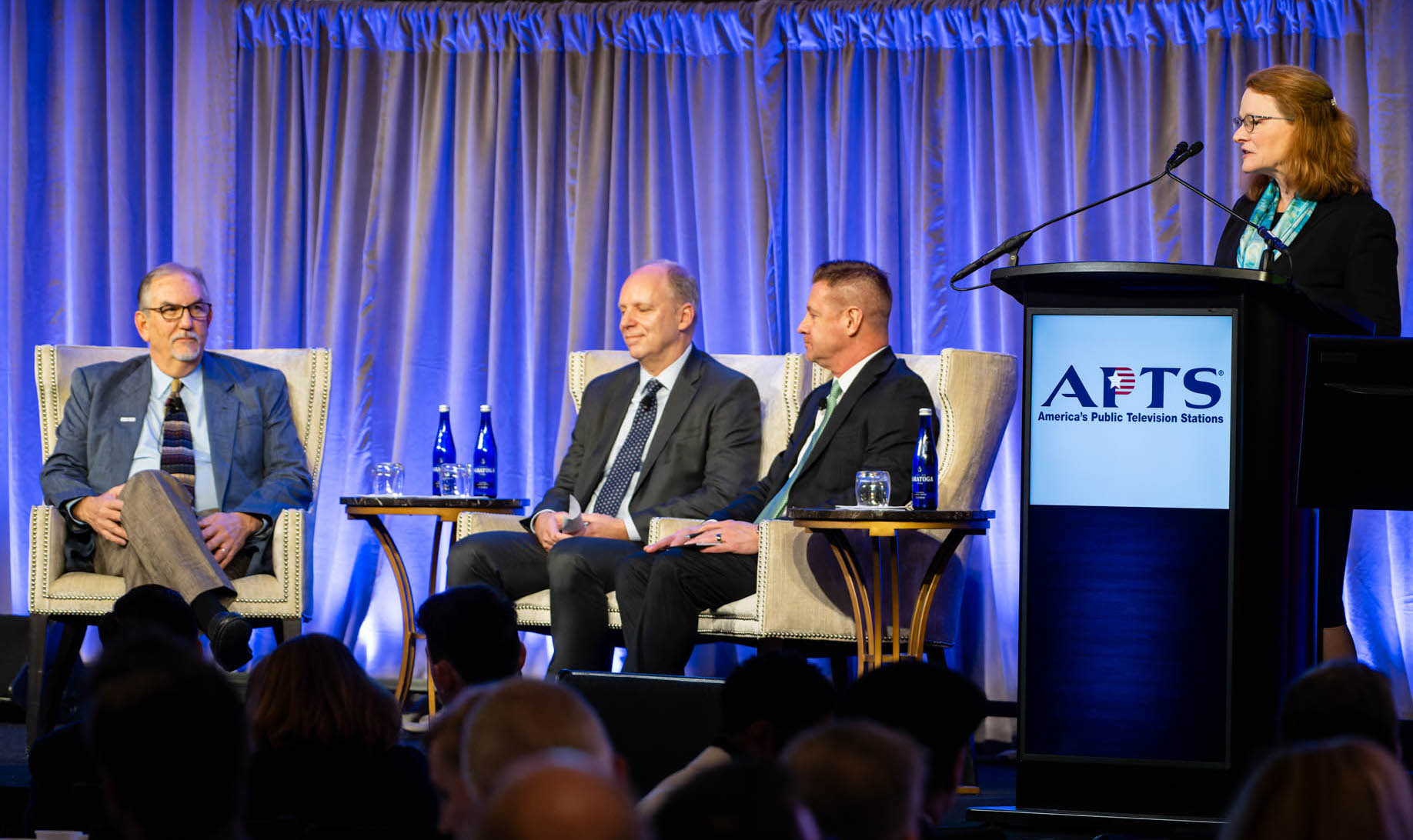Public Broadcasters Discuss Tech Strategies
APTS 2024 Public Media Summit explores ATSC 3.0, streaming and AI

WASHINGTON—As U.S. broadcasters continue their transition to ATSC 3.0, public broadcasters are playing a critical role, from testing new emergency alerting technologies to providing the myriad of services available, from datacasting to on-demand programming.
Leaders of several state public broadcasting organizations took the stage this week at the annual APTS Public Media Summit in Washington to discuss the transition and share ideas on how best to harness future technologies.
Early 1.0 Shutoff
One of those ideas is the concept of “flash-cutting,” which would mean shutting down ATSC 1.0 before a deadline for is determined by the FCC but not before also providing 3.0 auxiliary devices to consumers. Franz Joachim, GM and CEO of New Mexico PBS pointed to the unique circumstances surrounding a particular market in his state.
“We're looking at flash cutting one rural community in the southern part of our state,” he said. “It's a 5G community, interestingly enough, and it's a small town that has a greater than average membership base—I think we figured out that about 10% of the community members are members of our station.”
Joachim said such a high percentage gave them “a lot of context with what we're looking at” and that the community’s rural status left them without an option to share facilities via “lighthouse” arrangements where broadcasters transmitting 3.0 in the same market share transmission facilities. “We’re flash cutting that community over to ATSC 3.0 because there isn't an opportunity to ‘lighthouse’ ourselves or duplicate [transmissions].
Spectrum efficiency is top of mind among all broadcasters, not just public. However, public broadcasters may have better opportunities to soon take advantage of the new services enabled by 3.0, Joachim added.
“On our ATSC 1.0 signal, we're carrying two HD and three SD channels and we have just a tiny little bit of room left over to do some datacasting, and with ATSC 3.0, we're using about 55% of that 6 MHz channel to do exactly the same thing,” he said. “So I've got 45% of my space left over to try things to play with things. So we're rolling out ATSC 3.0 and opening it up and looking for partners.”
Get the TV Tech Newsletter
The professional video industry's #1 source for news, trends and product and tech information. Sign up below.
Joachim added that NM PBS is also looking into acquiring more low power transmitters to help rural areas of the state transition to 3.0 and even help bring new services enabled by 3.0’s integration of broadcast and broadband to underserved markets.
“We’re looking at starting to transition to low power translators,” he said. “We have a large translator network that covers a good part of our state, and we're working with equipment manufacturers, we're prototyping low power transmitters to roll out ATSC 3.0 into rural communities. I think this is where we start tackling the real issue of this which is the digital divide and how ATSC 3.0 can be a tremendous bridge to that.”
Streaming the Prime Driver of Growth
Andrew Russell, president and CEO of PBS SoCal in Los Angeles emphasized the impact that streaming has had on public broadcasting and the advantages of free in a world where consumers are being hit with constant subscription fee increases.
“What is our big growth driver? Of course, it's streaming, that’s where viewers are going,” he said. “We're all trying to figure out what's the mix, because having broadband to participate in the economy is really a necessity.”
Ad-free content and localization are key differentiators separating public broadcasting from streaming, which is trending towards ad-supported services, Russell added.
“I think the two opportunities that I don't think you see Disney+ or Netflix or others are going to do—one is to be locally focused and locally based,” he said. “That's our core strength. It's really hard to replicate the presence that we have in every community, and to use streaming for that purpose.
“The second is performance service,” he added. “We've been in the business of doing what the commercial market cannot and we've seen content that we know doesn't work. And while we went through this big streaming boom in the last few years, a lot of money was being thrown at that content and it is now receding. Now as we see streaming returning to advertising, it starts looking familiar—all of a sudden we see pullbacks in areas like high quality kids programming from the commercial market.”
Stacey Decker, SVP, Innovation and System Strategies for the Corporation for Public Broadcasting, urged attendees to continue to point to the intrinsic value of free over the air broadcasting, particularly during emergencies. But he also had a warning to his fellow broadcasters on the continuing dilemma of recruiting new blood.
“You got vertical real estate that's very valuable, and I think you should look to your neighbors and your partners to leverage that vertical real estate and point to the fact that cell phone towers are not as resilient, we know that; it's proven," Decker said. "The other thing I would say is that there's not a lot of RF engineers running around. I talked to people on a frequent basis that are concerned about supporting their infrastructure, because they have a shortage of staff. It's a skill set that's not widely available."
Whether or not some of that shortfall could be partly rectified by artificial intelligence, the other hot tech topic of the moment, is up for debate.
“A lot of our engineers have been working in the AI space for a long time,” Decker said. “It’s called ‘automation.”
“AI is going to change our lives,” Decker predicted, referring to a study from Goldman Sachs that estimates that as many as 300 million positions could be affected by AI. At NAB, there's a camera that's going to be announced that basically takes care of lighting and angles and you don't have to be a videographer. So certainly, there's a lot happening in the AI space. I think it will impact the broadcast infrastructure heavily.”
Tom has covered the broadcast technology market for the past 25 years, including three years handling member communications for the National Association of Broadcasters followed by a year as editor of Video Technology News and DTV Business executive newsletters for Phillips Publishing. In 1999 he launched digitalbroadcasting.com for internet B2B portal Verticalnet. He is also a charter member of the CTA's Academy of Digital TV Pioneers. Since 2001, he has been editor-in-chief of TV Tech (www.tvtech.com), the leading source of news and information on broadcast and related media technology and is a frequent contributor and moderator to the brand’s Tech Leadership events.

